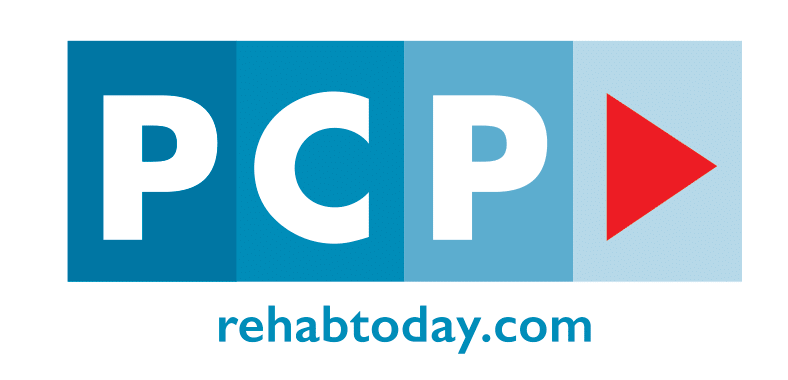Addiction recovery is a multi-sided process which involves more than just medications, therapy and rehabilitation. Addiction recovery exercise and physical fitness play an often overlooked and understated role in promoting recovery, curbing cravings, and reducing relapse rates. Specifically, exercise is crucial in the treatment of alcohol use disorder, serving as an adjunctive treatment that significantly impacts recovery outcomes, offering protective effects, and aiding in the management of withdrawal symptoms and cravings for individuals with alcohol use disorder. Exercise complements traditional addiction treatment methods, enhancing the overall effectiveness of a comprehensive addiction treatment program.
At PCP, we believe that physical exercise plays a pivotal role in the recovery process. Fortunately, we have the knowledge to educate you on the importance of exercise in substance abuse recovery.
So let’s explore the benefits of physical exercise in recovery, what exercises are best for recovery, and how to add exercise to your recovery journey safely.
Benefits of Physical Exercise During Addiction Recovery for Substance Use Disorders
● Eases withdrawal symptoms. Withdrawal is one of the leading causes of relapse. Researchers have found that regular physical activity reduces the intensity of withdrawal symptoms for people recovering from substance use disorder. The type of exercise doesn’t matter, but research showed that moderate to high-intensity exercise showed the best results. Additionally, exercise has been shown to benefit individuals with chronic medical illness, highlighting its importance in a comprehensive approach to health and recovery. Regular physical activity is particularly beneficial for individuals recovering from drug and alcohol dependence, as it eases withdrawal symptoms and curbs cravings, supporting a smoother recovery process.
● Curbs cravings. Cravings are another significant challenge during recovery and a consequence of the long-term effect of drug misuse on the reward centres of the brain. Exercise helps reduce cravings for drugs by re-wiring these reward centres and promoting internal inhibition.
● Reduces exposure to triggers. Regular physical exercise can be used as a strategy for avoiding triggers and is an effective way to prevent relapse during recovery. Many people fall back into old habits when idle, and exercise helps you positively occupy your free time. Also, tailoring your fitness schedule around your moments of weakness helps prevent relapse. For example, I could work out during the happy hour. Also, knowing you have to get up early in the morning to exercise prevents you from staying up late, which is when most drinking or drug use occurs.
● improves sleep. Insomnia and other sleep difficulties are common symptoms of withdrawal and pose a challenge during the recovery period. Physical exercise is an effective sleeping aid and improves sleep duration and quality.
● Improves mental clarity and mood. Psychological symptoms like brain fog, anxiety, and depression are common during the recovery phase. During exercise, your brain releases substances like dopamine and serotonin, which create a positive feeling and can elevate your mood and improve focus. This is particularly beneficial for individuals dealing with mental health disorders, such as depression and anxiety, emphasizing the role of exercise in managing these conditions alongside addiction recovery.
● Boosts self-esteem. Low self-esteem is a frequent feature and cause of substance use disorders. It also increases your risk of depression, anxiety, social withdrawal, and relapse. Exercise boosts self-esteem by promoting a positive body image and improving mood.
● Improves discipline. Regular physical exercise adds structure and routine to your day, which is crucial for starting an exercise program. This improves self-discipline, impulse control, and internal inhibition, helping those recovering from substance use control their cravings and prevent relapse.
● Relieves stress. High-stress levels are another cause of relapse. Exercise is an effective and healthy way to manage stress. It does this by promoting the release of endorphins, reducing the effects of stress on the body, improving mood, and enhancing focus.
● Helps you build relationships. Exercise can also be an avenue for building positive relationships. Social support is an important part of the recovery process, and exercise can help you build strong connections.
Best Exercises for Addiction Recovery

Incorporating exercise sessions into your daily routine is crucial for addiction recovery. Breaking up these sessions into manageable blocks can significantly enhance the recovery process. There is no particular type of exercise that is considered better when it comes to addiction recovery, with aerobic and resistance exercises both considered adequate. This is where exercise training comes into play, serving as an adjunctive treatment for substance use disorders. Incorporating vigorous exercise, in addition to aerobic and resistance exercises, can enhance sleep quality, reduce the risk of chronic diseases such as cancer, and support the recovery process by allowing the mind and body to heal and recover and lowering the risk of worsening existing conditions. Participating in exercise classes can provide structure and routine, fostering accountability and social connections that help combat feelings of isolation and promote motivation among participants in a supportive community.
Here are some excellent aerobic and resistance exercises you can perform during recovery. They emphasize the importance of structured exercise training in your program.
Aerobic Exercises

Aerobic exercise, also known as cardiovascular exercise or cardio, involves exercises that increase your heart and breathing rate over an extended period, improving heart and lung function.
Examples include:
● Running, jogging or brisk walking
● Cycling
● Swimming
● Jump rope
● Dancing
● Rowing
● Kickboxing
● High-Intensity Interval Training (HIIT)
● Stair climbing or using a stair-stepper machine
Incorporating moderate-intensity aerobic exercise into routines can be particularly beneficial for individuals recovering from substance use disorders, offering a potential adjunct to standard treatments by reducing drug and alcohol cravings, enhancing stress sensitivity, and improving heart rate variability. Additionally, aerobic exercises can help alleviate stress and contribute to recovery from drug addiction.
Resistance Exercises
Resistance exercise, also called strength training or weight training, involves exercises that make your muscles work against an opposing force. This force usually consists of weights, resistance bands, or even your body weight. Some examples include:
● Squats
● Deadlifts
● Bench press
● Push-ups
● Pull-ups
● Lunges
● Bicep curls
● Tricep dips
● Shoulder press
● Plank
Engaging in resistance exercises not only builds muscle strength but also enhances overall physical health during recovery.
How Often Should You Exercise During Recovery?
There is no strict recommendation regarding the right amount of exercise during your recovery journey. Most medical professionals advise you to get at least 150 minutes of moderate or 75 minutes of intense exercise every week. They should also include at least two days of strength training.
To prevent this from becoming overwhelming, a helpful tip is to break down these exercises into 30-minute sessions every day. Start slowly, and do not overexert yourself in the beginning. As your body slowly adapts to this level of physical activity, you can increase the intensity of your workout.
Remember, just like addiction recovery, the journey towards physical fitness is a marathon, not a sprint. Compared to traditional treatment methods, which often involve drug replacement therapies, incorporating regular exercise can provide a holistic and supportive alternative to enhance recovery outcomes.
Barriers to Exercise for Mental Health During Recovery
● Physical limitations. Chronic substance abuse often leads to several health issues, such as chronic fatigue, weakness, or chronic pain. Also, withdrawal symptoms like nausea, muscle aches, or fatigue can make physical exercise difficult. Individuals recovering from drug abuse may face additional challenges due to these physical limitations.
● Mental health challenges. Substance use disorders and withdrawal can lead to several psychological conditions like anxiety, depression, apathy, low self-esteem, brain fog, or mood swings. This can affect motivation and willingness to initiate and maintain a regular exercise routine.
● Financial constraints. Limited financial resources may restrict your access to fitness facilities, equipment, gym memberships, or professional assistance.
● Time management. Recovery often involves juggling multiple responsibilities, such as work, family commitments, or therapy sessions, leaving little or no time for exercise. Most people recovering from substance use disorders also have difficulties establishing a routine or setting aside dedicated time for physical activity.
● Social isolation. Withdrawal from social circles is associated with substance abuse and can lead to feelings of isolation, reducing opportunities for engaging in group fitness activities.
● Past negative experiences. Previous unsuccessful attempts at exercise or negative experiences (e.g., injuries, overexertion) can create fear or reluctance to try again.
Seek Help at PCP

At PCP we believe in taking a holistic approach to recovery, emphasizing the interconnectedness of physical and mental health. This includes promoting health and recovery through safe, regular exercise. The benefits of promoting physical fitness during the recovery process are numerous and include reducing the risk of relapse, curbing cravings, easing withdrawal symptoms, and enhancing both physical and mental health.
Fortunately, we at PCP have both the knowledge and dedication to help you effectively deal with the challenges of recovery and offer you an understanding of how to make your recovery journey as smooth as possible.







